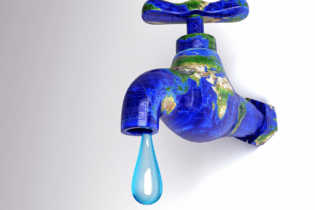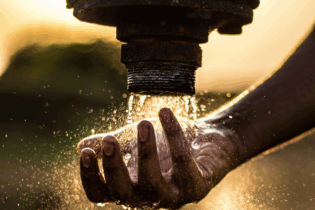With a warning of COVID-19 reaching its peak in the next two weeks or so, the demand for South Africans to wash hands frequently is also expected to rise.
This phenomenon might put a strain on the availability of water across the country. The latest weekly report by the Department of Water and Sanitation (DWS) indicates that the national average dam level stands at 68.6%, a marginal drop from last week’s 69%. There are 21 971,1 cubic metres of water that have been stored in reservoirs for domestic, agricultural and industrial use, says the report To cope with the demand, the department has distributed over 20 000 jojo tanks to needy communities across the country. Dams in Western Cape continue to swell as they rose from last week’s 59,8% to 60,7%. As the winter rains drench the province, it is expected that the dam levels will increase substantially in the next few months. The levels have risen by 6% compared to the same period last year when it was 54,7% Free State has dropped from 81,2% to 80,7%. However, in terms of quantity, the province boasts the biggest volumes of water in the country because of some of the biggest dams that are found in the province.With its fewer and smaller dams, Gauteng has almost reached its capacity at 99,3% while the Vaal Dam remains stable at 42.6%. Northern Cape recorded a whopping 93,9%, having soared by 2% in the past week. However, the province has the fewest and smallest dams in the country that get filled up at the slightest rain.
Although Limpopo has dropped its dam level slightly from 64,6% to 64,1% this week, the province’s water situation remains fairly stable with dams in Vhembe Epharaim Mogale districts recording above 70% level. However, the water situation remains dire Mopani District as Tzaneen and Middel-Letaba dam levels are stagnant below 20%. The dam levels in Mpumalanga have slightly dropped from 71.6% last week to 71.2% this week. KwaZulu Natal is in the middle of the table having dropped marginally from 59,8% last week to 59,4% this week. Midmar Dam in Natal-Midlands has almost reached its capacity while Albert Falls outside Mooi River continues on a downslide and has reached 39,2% this week. At 98,2% Driel Barrage that is fed by Uthukela River is the fullest reservoir in the province. North West is also having sufficient water in its reservoir after storing 602,7 cubic metres (80%) of water for domestic, agricultural and industrial use. At the beginning of the year North West was among the three provinces that recorded below 50% dam levels, sparking fears that the province might be plunged into dry conditions during the winter season Eastern Cape dams have remained stable at 51,6%, having moved fractionally from 51,5% last week. The province has 933,1 cubic metres of volumes of water in its reservoirs, which is half the full capacity of 1809,6 cubic metres. Against this background, DWS would like to urge all water users to save water by using it wisely and sparingly until the next summer rains.







